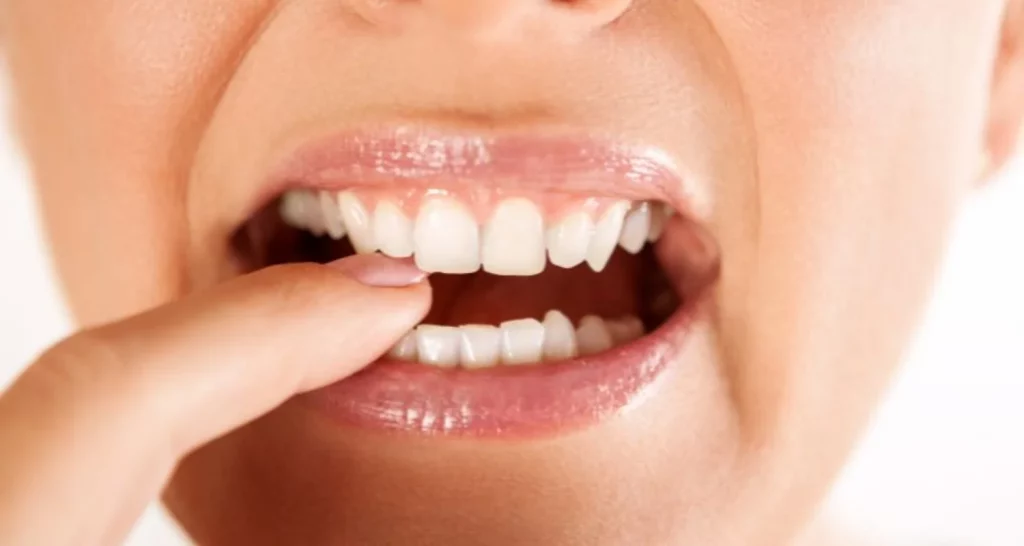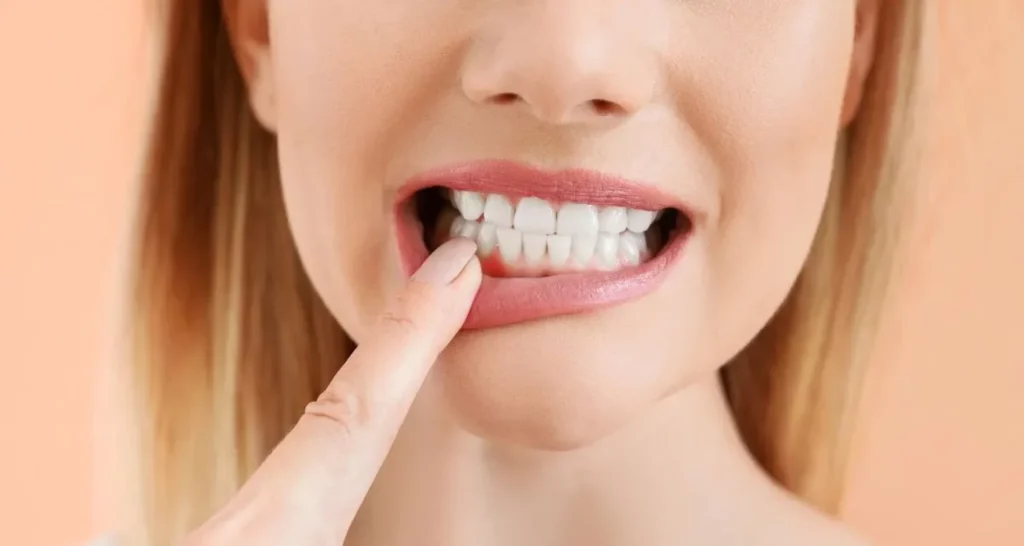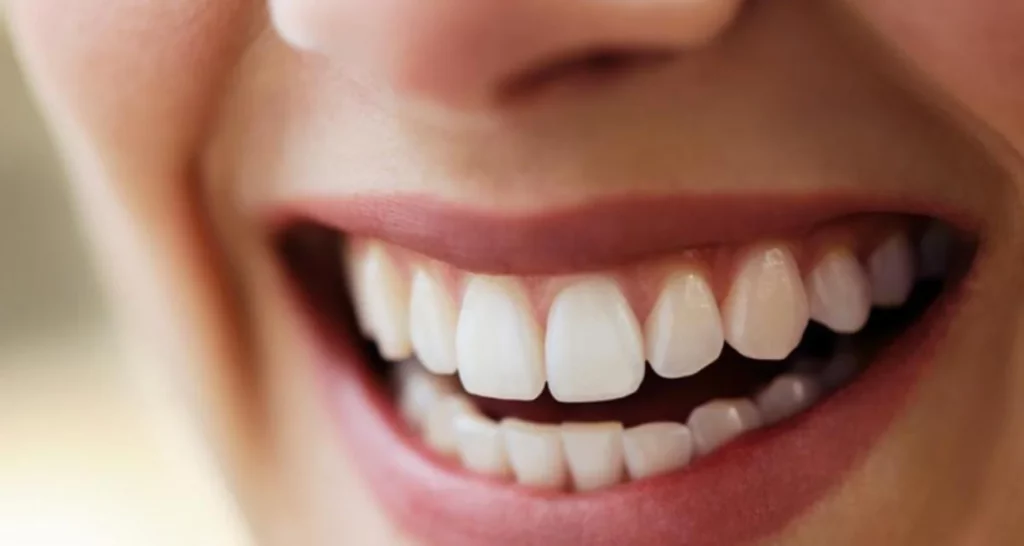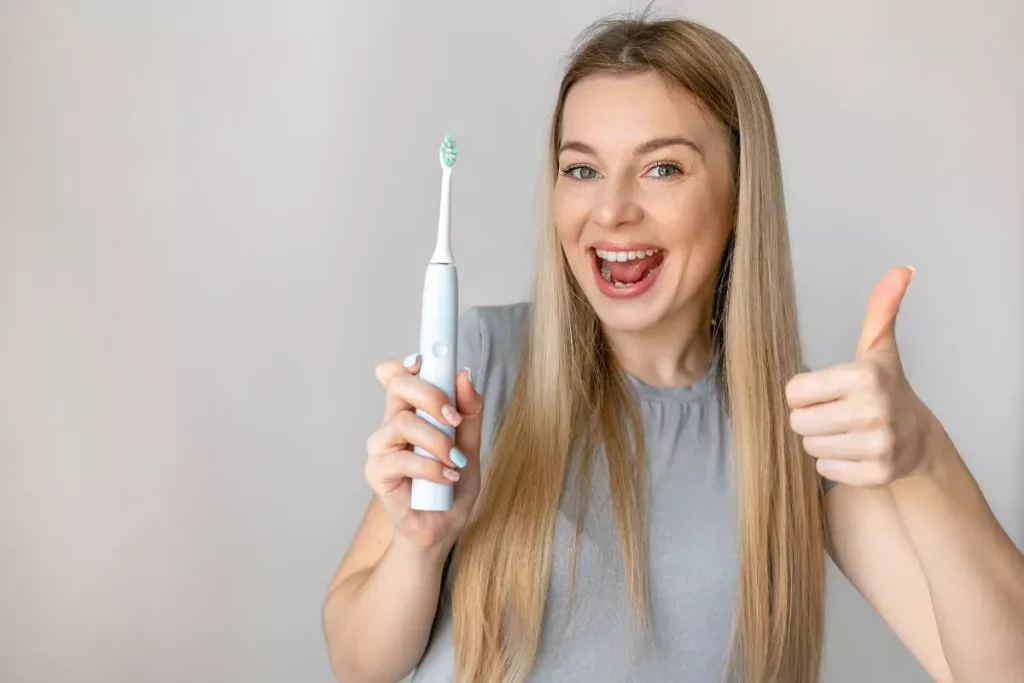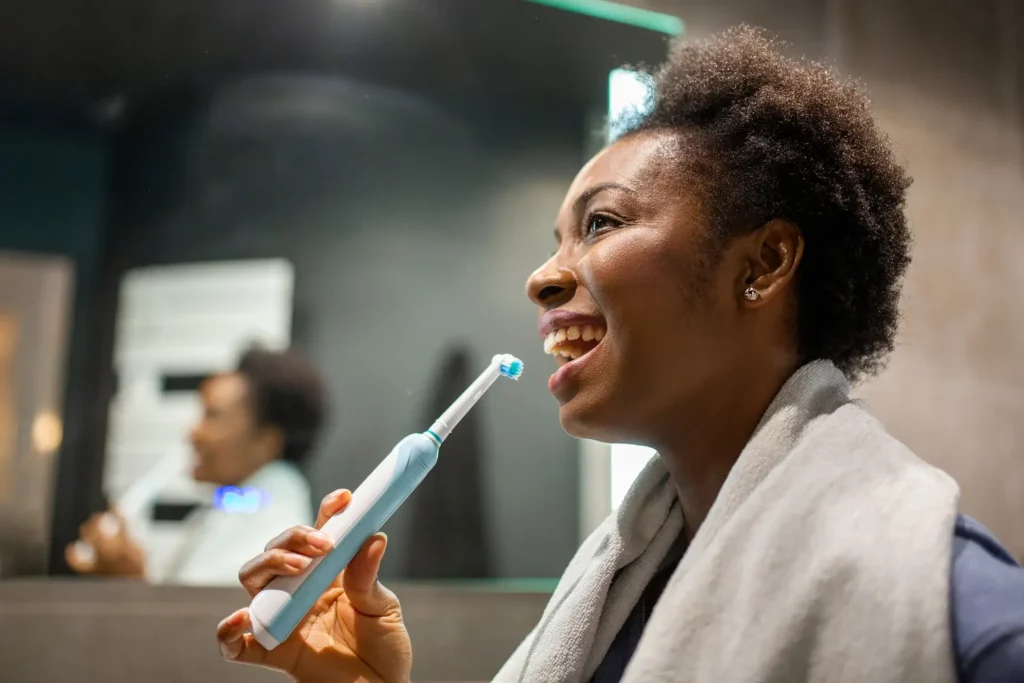Oral health is a pillar of an optimal quality of life. Loose teeth, a recurrent oral problem, indicates gum disease among other conditions. This article explores in depth the causes behind tooth mobility, how it is related to periodontal diseases, and existing treatments that address this problem. In addition, tips on preventing this condition will be provided, to keep you informed and help you maintain oral health in the best possible way.
Is it common for healthy teeth to be mobile?
Even teeth in perfect condition can experience a slight degree of mobility when moderate force is applied. This acts as a defense mechanism against impacts, reducing the risk of fractures in the event of a direct hit.
Generally, this minimal mobility is imperceptible; if you experience the sensation of loose teeth, it is not normal and could indicate an underlying problem.
After noticing dental mobility, do not assume that your teeth are healthy; they may be compromised by some adverse condition. Identifying the underlying cause is the first step in implementing appropriate treatment. Teeth, by nature, can make a very subtle movement that may be barely perceptible to the touch. However, the degree of movement is so minimal that it cannot be detected with the naked eye.
If tooth movement is clearly visible or excessive to the touch, a problem requiring attention is likely. Frequently, evident tooth mobility is a sign of advanced periodontal disease, which implies a significant deterioration of the bone and the gums that support the tooth. Without proper bonding between the periodontal ligament and the bone, the tooth will become loose.
Tooth mobility has other causes, such as a malocclusion where the upper and lower teeth do not fit correctly, or trauma to the jaw. Bruxism, common in people with stress who grind their teeth, does not only cause tooth mobility but also significant enamel wear.
Loose Teeth and Gum Disease
When teeth begin to move, it is often an indication of advanced periodontal disease. The World Health Organization (WHO) reports that severe periodontitis, an acute form of gum disease, can lead to tooth loss. It affects approximately 10% of the world’s population.
Periodontal disease
Periodontal disease, also known as periodontitis or pyorrhea, is caused by bacteria that infect and inflame the gums, leading to the destruction and resorption of the bone, where the tooth roots lie. This condition is one of the main reasons for dental mobility in adults, since by losing their anchorage, teeth can fall out if an intervention is not done on a timely basis.
4 Causes of periodontal diseases
Poor oral hygiene is the culprit. It is vital to brush your teeth after every meal and floss afterward. Your dentist will offer valuable recommendations for effective brushing, minimizing the need for frequent dental visits.
1. Genetic predisposition: it increases the risk of developing periodontal diseases, so if you have a family history of tooth loss, it is advisable to take precautions.
2. Diabetes is another risk factor, since people with this condition are more likely to suffer from gum diseases such as gingivitis.
3. Hormonal changes during pregnancy or menopause can predispose a person to periodontal disease.
4. Smokers or those who breathe through their mouths also have a high risk of gingival infections, since a dry mouth facilitates the proliferation of bacteria that cause tooth mobility.
Finally, having misaligned teeth can thwart a thorough dental cleaning, contributing to the development of periodontal diseases.
Importance of Gum Health
Gum disease, technically known as periodontal disease, is a pathology that affects a vast number of individuals globally. The American Dental Association (ADA) points out that it is an infection of the tissues that surround and support the teeth, with plaque accumulation being the main cause. Without adequate treatment, the condition can lead to tooth loss due to the degradation of the structures that support the teeth, highlighting the vital importance of taking care of our gums.
Other Causes of Loose Teeth
Loose teeth can arise for multiple reasons; knowing the specific cause is essential for proper management. Among the most common causes are:
● Gum Disease: The accumulation of bacteria can inflame the gums, triggering periodontal disease which, if left untreated, damages the bone around the teeth and causes them to move.
● Infection: An unattended cavity can infect the root of the tooth and affect the surrounding bone, causing tooth mobility.
● Fracture: A trauma can fracture teeth, appearing mobile and sometimes resulting in tooth loss.
● Bruxism: Stress can lead to bruxism, which in turn can loosen the fibers of the periodontal ligament, causing tooth mobility.
● Systemic diseases: Conditions such as Ehlers Danlos Syndrome, Down Syndrome, Diabetes Mellitus and osteoporosis may include dental mobility among their typical symptoms.
Treatment and Prevention
Fortunately, there are effective measures to both treat and prevent loose teeth:
Treatment for loose teeth
● Visit the dentist: It is crucial to schedule regular visits for complete evaluations and early treatments as necessary.
● Oral hygiene: Good oral hygiene is essential to prevent plaque buildup, using proper brushing techniques and flossing.
● Mouthwashes: The use of antiseptic mouthwashes should complement daily dental cleaning.
● Dental prophylaxis: Professional cleaning can remove non-removable plaque and calculus through brushing, helping to restore the periodontal fibers.
● Orthodontics for dental alignment: When the cause of tooth mobility is due to poor alignment, orthodontic treatment becomes essential. It will adjust the bite and correct the alignment of the teeth to ensure the correct position.
● Protector for bruxism: For those who suffer from bruxism, the use of night mouth guards is recommended. These splints protect the teeth from wear and tear caused by constant friction during the night.
● Tooth extraction: In cases where a tooth is extremely loose and there is no other viable solution, extraction may be the most appropriate alternative. Subsequently, placement of an implant or prosthesis may replace the extracted tooth.
● Other dental procedures: Techniques such as dental splinting offer a solution for loose teeth, allowing them to be attached to more stable teeth to achieve greater firmness and stabilization of the affected tooth.
Prevention of loose teeth
● Rigorous hygiene: Adopting a consistent oral hygiene routine significantly reduces the risk of tooth mobility.
● Avoid tobacco: Smoking increases the risk of periodontal disease.
● Healthy nutrition: A nutrient-rich diet is key to maintaining healthy teeth and gums.
● Controlling stress: Stress management techniques can prevent bruxism and, therefore, dental mobility.
● Regular dental checkups: Regular visits to the dentist allow problems to be detected early and treated in time.
Conclusion
Loose teeth should not be taken lightly, as they can be a sign of serious underlying conditions such as periodontal disease. Fortunately, with proper care, it is possible to reverse this condition and achieve a healthy smile. Prevention plays a crucial role in oral health, making it important to adopt good hygiene habits, schedule regular visits to the dentist, and maintain a healthy lifestyle.
Frequently Asked Questions
How are loose teeth caused by periodontal disease treated?
Dental splinting involves bonding the affected tooth to adjacent teeth to stabilize it. This procedure is considered a temporary measure, since the bonding material, such as composite, may have a limited duration. Deep Cleaning is also advised. In cases where tooth mobility is due to poor oral hygiene and/or periodontal disease, the dentist may attempt to preserve the tooth through deep cleaning.
Is it possible for a loose tooth to be firmed?
Depending on the nature and severity of the damage to the tooth, the dentist may decide to extract and replace it with a dental bridge or implant. However, if the tooth is slightly mobile, it may be allowed to firm up naturally. In most situations, these teeth can be restored and strengthened in a matter of weeks.
Is it possible for a dentist to repair a mobile permanent tooth?
The encouraging news is that, in a large number of cases, it is possible to rescue a permanent tooth with mobility through an appropriate intervention carried out in time. If you experience mobility in one or more teeth, it is crucial not to delay seeking professional assistance. Contact your dentist, endodontist, or periodontist as soon as possible so the necessary actions can be implemented to preserve your tooth.
What happens if a loose tooth stays too long in a child?
In rare cases, the tooth fragment may remain in the gum. This experience can upset a child and cause anxiety related to teeth. On the other hand, if the baby tooth is left too long, it can cause inflammation of the gum and prevent the adult tooth from erupting.
Share:
References
1. American Dental Association. (Jun, 2022). Periodontitis. https://www.ada.org/resources/research/science-and-research-institute/oral-health-topics/periodontitis
2. Centros para el Control y Prevención de Enfermedades. (Oct, 2023). Tabaquismo, enfermedad de las encías y caída de los dientes. https://www.cdc.gov/tobacco/campaign/tips/spanish/enfermedades/tabaquismo-enfermedad-de-encias.html
3. Kaiser Permanente. (Aug, 2023). Gum Disease. https://healthy.kaiserpermanente.org/health-wellness/health-encyclopedia/he.enfermedad-de-las-enc%C3%ADas.hw146344
4. Berry J., Archibald J. (Nov, 2023). Why is my tooth loose, and how do I treat it?. Medical News Today. https://www.medicalnewstoday.com/articles/322028
5. National Institute of Diabetes and Digestive and Kidney Diseases, NIH. (Jan, 2022). Diabetes, Gum Disease, & Other Dental Problems. https://www.niddk.nih.gov/health-information/diabetes/overview/preventing-problems/gum-disease-dental-problems
6. American Academy of Periodontology. (s. f.). Gum Disease: What You Need to Know. https://www.perio.org/consumer/gum-disease.htm
7. Cleveland Clinic. (Oct 4, 2023). Gum (Periodontal) Disease. https://my.clevelandclinic.org/health/diseases/21482-gum-periodontal-disease
-
Nayibe Cubillos M. [Author]
Pharmaceutical Chemestry |Pharmaceutical Process Management | Pharmaceutical Care | Pharmaceutical Services Audit | Pharmaceutical Services Process Consulting | Content Project Manager | SEO Knowledge | Content Writer | Leadership | Scrum Master
View all posts
A healthcare writer with a solid background in pharmaceutical chemistry and a thorough understanding of Colombian regulatory processes and comprehensive sector management, she has significant experience coordinating and leading multidisciplina...



